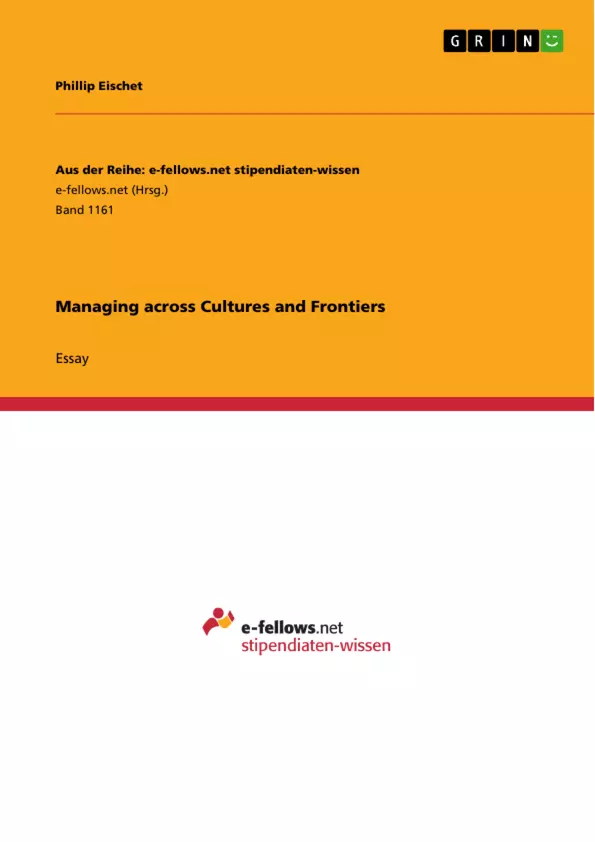Mahatma Gandhi, the famous Indian fighter for freedom, once stated: “A nation's culture resides in the hearts and in the soul of its people”. Of greater importance, however, than analysing where in the human body culture is located, is the question whether such a concept as national culture does exist at all. According to McSweeney (2002, Abstract), most of the literature within each management discipline implies that actually “each nation has a distinctive, influential and describable ‘culture’”. Although it can therefore be assumed that different cultures exist, there is no universal and objective description of any one culture on its own (Mead, 2005). Any one culture can only be described in relation to another culture; this is precisely where a few famous approaches to the whole subject of different cultures and their classification and comparison come in. The models’ differences as well as their complementariness will be the focus of the first part of this paper. The conceptual notions that will be discussed and compared along the dimensions of their research method and their primary focus are those of Edward T. Hall (1976), Geert Hofstede (1980), and Fons Trompenaars and Charles Hampden-Turner (1998). Furthermore, in the second part of this paper, the specific interrelationship between culture and today’s business world, as well as the management practices within it, is described and analysed by focusing on Culture and Organisation on the one hand, and on Culture and Communication on the other hand.
Inhaltsverzeichnis (Table of Contents)
- Introduction
- Conceptual Notions of Culture: Differences and Complementariness
- Analysing the different models concerning their underlying research methods
- Analysing the different models concerning their primary focuses
- Culture and Organisation
- Culture and Communication
Zielsetzung und Themenschwerpunkte (Objectives and Key Themes)
This essay examines three major conceptual approaches to culture, highlighting their differences and similarities. It then delves into the interrelationship between culture and two chosen management practices: organization and communication.
- Comparison of cultural models by Edward T. Hall, Geert Hofstede, and Fons Trompenaars and Charles Hampden-Turner
- Analysis of the research methodologies employed by these models
- Exploration of the primary focuses of each model
- Examination of the influence of culture on organizational structures
- Investigation of the impact of culture on communication styles and practices
Zusammenfassung der Kapitel (Chapter Summaries)
The introduction sets the stage by exploring the concept of national culture and its significance in the context of management. It introduces the three major conceptual approaches to culture that will be examined in the essay.
The first chapter delves into the differences and complementarities of the models developed by Edward T. Hall, Geert Hofstede, and Fons Trompenaars and Charles Hampden-Turner. It analyzes the research methodologies employed by each model, comparing their quantitative and qualitative approaches, and discusses their strengths and weaknesses.
The second chapter focuses on the relationship between culture and organizational structure. It examines how cultural dimensions influence aspects such as formal and informal systems, centralization, and bureaucracy. The chapter also highlights the importance of considering cultural differences when implementing organizational structures in multinational companies.
The third chapter explores the influence of culture on communication styles and practices. It discusses how cultural factors impact the content, sender, recipient, timing, location, and language of communication. The chapter particularly focuses on Hall's model of contexting, explaining how low- and high-context cultures approach communication differently.
Schlüsselwörter (Keywords)
Culture, management practices, cross-cultural communication, organizational structure, national culture, cultural dimensions, high-context cultures, low-context cultures, power distance, uncertainty avoidance, collectivism, individualism, Guanxi, formal and informal systems.
- Quote paper
- Phillip Eischet (Author), 2014, Managing across Cultures and Frontiers, Munich, GRIN Verlag, https://www.grin.com/document/295218



